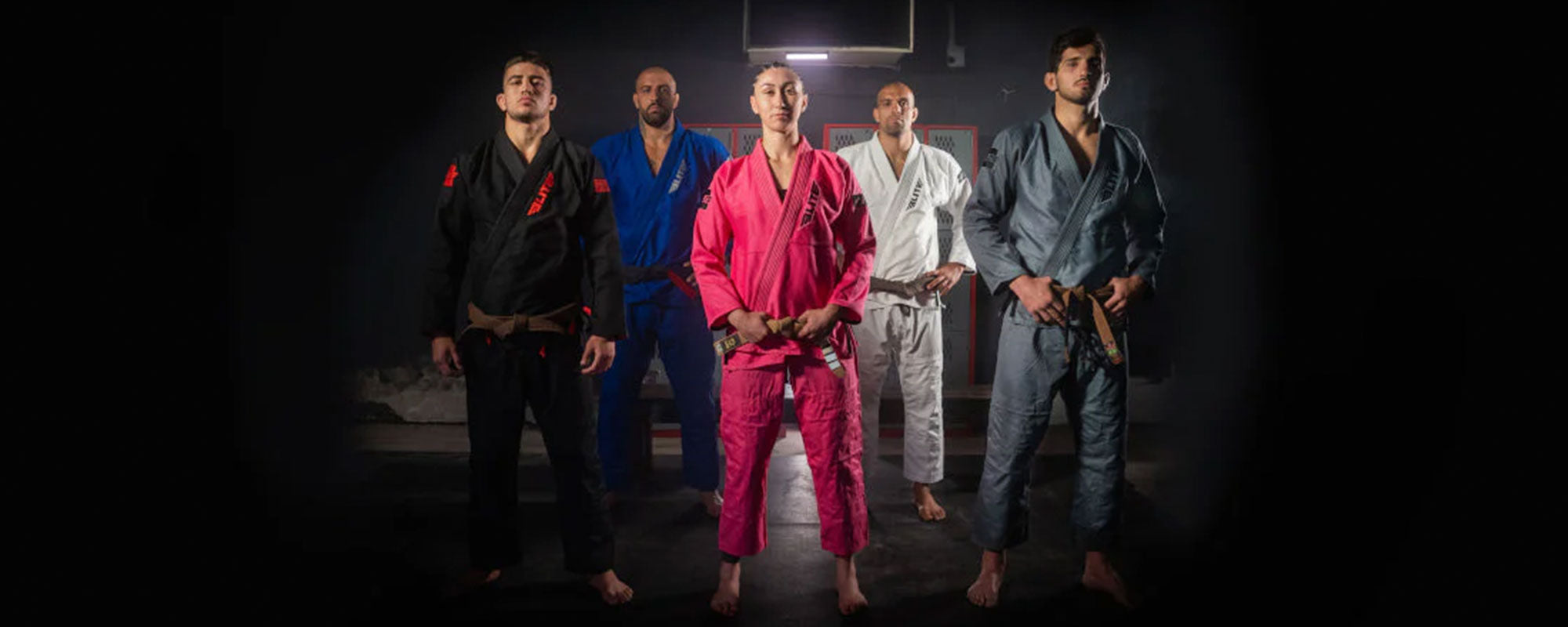Table of content
1. Overview
BJJ training may look like a series of random movements for the layman. But, in reality, these movements are precise and practiced through many years of training.
Expertise in BJJ fighting techniques is not an in-born talent. All BJJ athletes set realistic goals to improve their physical strength, mental fortitude, stamina, endurance, and technical skills while following a healthy diet.
Setting realistic goals is different for every BJJ grappler as each rank requires a different workload. So, the goals must be set carefully by considering the rule of SMART goals.
The following article provides valuable tips for BJJ athletes to set realistic goals for a successful BJJ journey.
2. What are Realistic Goals?
- In 1968, Edwin Locke introduced the idea of goal-setting.
- There is a difference between simple and realistic goals. Realistic goals are always directed with specific time frames and resources.
- Realistic goals can be short, mid, and long-term.
- Realistic goals are well planned and executed to be achievable within a specific duration.
- The process of realistic goal setting is a mental training technique that helps you commit to achieving personal goals.
- An individual will be more motivated and work harder to overcome hurdles with short or long-term planning.
- Goal setting helps enhance concentration, increases efforts, and develops effective strategies to achieve goals.
- Goal setting also helps you set and achieve personal and professional goals.
2.1 Need to Setting Realistic Goals
Goal setting is considered a part of sports psychology. It is a helpful way to improve your performance in sports.
Suppose an athlete is aware of his/her personal fitness goals and has knowledge of sports psychology. Then, he/she will be able to better evaluate his/her strengths and weaknesses in relation to his/her goals.
The goal-setting process is universal and can be used by everyone who wants to accomplish big things in life. People must show commitment, consistency, and dedication to achieve their realistic goals.
3. Realistic Goals for BJJ training
A BJJ fighter can set realistic goals by using a time limit and available resources. The time limit can vary from one week, one month, three months, six months, or one year, depending on the difficulty of the goals.
A long-term goal for many BJJ fighters is to earn a new belt or enter a BJJ tournament. A mid-term goal is to regularly train at least 2-3 times per week. A short-term goal is to learn how to perfectly execute an arm bar submission.
The key to achieving realistic goals is to be proactive to ensure consistent growth and success.
3.1 Going to the gym get you to have a better health
| Outcome Goals (Long Term) |
Performance Goals ( Medium Term) |
Process Goals (Short Term) |
|---|---|---|
| Related to winning, self-improvement, and performing better than opponents. Making efforts to achieve a desired result. Motivates BJJ fighters. |
Related to setting personal standards to achieve a specific goal. Used to monitor the progress of process goals in reaching a desired outcome goal |
BJJ fighters have complete control of achieving process goals. Related to improvements in learning techniques and strategies. Helpful in achieving a desired outcome goal. |
3.2 SMART Goals for BJJ Training
The best way for BJJ players to set their realistic goals is as follows:
S. Specific
It is essential to always set a specific goal when wanting to attain a desired outcome. For example, suppose a BJJ fighter sets a goal to lose weight or improve health. This goal isn’t as easy to make an objective evaluation. So setting a specific goal for BJJ training can sound like attending BJJ classes three days a week for four weeks to lose eight kg.
M. Measurable
A realistic goal must be specific and measurable. It is vital to measure the progress and desired results. Losing weight or health improvement goals is not measurable unless a milestone is set. For example, if a goal is to lose eight kg of weight with 12 BJJ classes within a month, then it means that a BJJ fighter needs to lose an average of two kg per week. Thus, this goal becomes specific and measurable, too.
A. Achievable
Realistic goals must be achievable and realistic. BJJ players must evaluate their strengths and weaknesses to continue with a consistent BJJ training routine. The training hours must be set according to one’s current physicality. Sometimes, hard training for long hours increases the risk of injury. So, achievable and realistic goals help BJJ fighters exercise enough that they can attain a desired outcome without straining their muscles.
R. Relevant
BJJ fighters must set their goals according to their physical and mental health routines, habits, and lifestyles. The relevancy of goals in relation to life routines is essential to achieve goals in a timely manner.
T. Time-Based
BJJ players must set deadlines for their goals so they are accountable for achieving their goals.
3.3 Guidelines for Setting Realistic Goals in BJJ
For example, if a BJJ athlete sets a goal to win the Pan American Championship, he must make sacrifices to make his goal possible. He needs to invest time and resources in hard training, limit social gatherings, and quit an unhealthy diet.
Following such a strict routine to be able to compete in a BJJ competition can go on for years. Sometimes, it may be frustrating to set up routines without breaks.
These are a few guidelines to help you stick to your realistic goals:
1. Time and Focus
Setting a timetable for training, diet, and other activities helps you focus on goals while avoiding distractions.
2. Commitment
Commitment is key to your motivation and determines how far you come to achieving your goals.
3. Consistency
BJJ fighters need ongoing challenges to achieve goals, so it is necessary to show consistency throughout your BJJ journey.
4. Improvement in Physical Strength with BJJ Training
Physical strength training in BJJ can be very challenging. So while setting a goal of improving their physical strength, BJJ fighters must consider the following aspects:
4.1 Evaluating Current State
It is advisable for BJJ players to evaluate their strengths, weaknesses, and which techniques they need to practice on to gain physical strength.
4.2 Reaching the BJJ Gym
A dedicated BJJ fighter must reach the BJJ gym 10 to 20 minutes before the start of a workout to do a warm-up.
4.3 Warm-Ups
Warm-ups are important for stretching muscles to prevent injury. The ideal warm-up exercise can be 30 jumping jacks, 20 squats, and 10 push-ups within five minutes. A BJJ fighter can repeat these exercise rounds if need be.
4.4 Setting Number of Rounds
If a BJJ fighter picks a goal of finishing six rounds within one hour to improve his/her physical strength, each round will have to be 7 to 8 minutes long. At the end of the day, an athlete must evaluate whether he/sh%e achieved the goal or not. If not, he/she can work on improving his stamina for the following sessions.
While practicing with a partner, a BJJ fighter must avoid wasting energy instead learning how to deliberately strike the opponent with as little movement as possible.
4.5 Be Disciplined with Drills, Dedication, and Focus
BJJ fighters must be focused on attending the BJJ classes regularly without any distractions getting in the way.
4.6 Taking BJJ Coach Feedback
A BJJ coach’s feedback can be fruitful for BJJ players looking to improve their BJJ techniques and help them overcome any shortcomings during BJJ training.
4.7 Train Consistently
A BJJ fighter must carefully set a training timetable. A training schedule must consist of a number of days and hours per week suited to your current level of stamina.
4.8 Improvement in Technical Skills with BJJ Training
BJJ training also requires improvement in technical skills. BJJ fighters must pick two or three BJJ techniques to practice more during training sessions. For example, a BJJ fighter can choose to improve his/her open guard, close guard bottom, and side control top positions.
Then, a BJJ athlete can request his teammates to practice with him/her for one or two weeks depending on their availability. It depends on how many weeks the fighter needs to gain expertise in the target techniques. This way, many BJJ athletes can practice for their favourite BJJ positions in preparation for real competitions.
5. Improvement in Healthy Diet with BJJ Training
A BJJ practitioner must be able to improve their health with a . It is required for a BJJ player to manage what he/she is eating and appropriate eating times. BJJ training needs commitment from practitioners to quit mid-night snacks, junk food, sugary drinks, and alcohol in favor of a healthy diet.
BJJ fighters must consume almost 5,000-6,000 calories per day, depending on the intensity of their training. Some guidelines to follow are:
- Eating every three hours
- Drinking plenty of water
- Whole foods
- Protein rich-diet
- Carbs/vitamins
- Supplements
- High-fat foods
- Organic meat/eggs
- Fruits/veggies
6. Improvement in Mental Health with BJJ Training
BJJ fighting skills and techniques are not enough to make progress and achieve goals. All BJJ fighters need to focus on improving their mental strength and physical health.
As motor and coordination skills, as well as decision-making can weaken with stress, anxiety, and fatigue. Sometimes, constant fatigue results in depression and frustration that may lead to you quitting BJJ training or preparing for BJJ competitions.
It is important for BJJ players to check on their mental health and seek professional help if needed. They must do one or two meditation sessions to relieve stress and anxiety.
7. Preventing Injuries with BJJ Training
Stamina is necessary for BJJ fighters. Cardio and rolling exercises are the best ways to improve their stamina. Rolling exercises for one hour can burn up to 1,000 calories. Improving stamina can help BJJ players to rely less on just strength and speed and teaches them to improve on their knowledge of BJJ techniques.
8. Improvement in Stamina with BJJ Training
BJJ players sometimes sustain injuries during BJJ training. Almost 9 out of 10 BJJ players are injured during a training session. The most common injuries are finger sprains and neck and upper body strains.
The primary goal of BJJ training is to improve one’s physical strength and knowledge of techniques rather than increase the risk of injury. A BJJ fighter must take all the proper safety precautions and protocols.
9. Goal Setting Plan for 2022
Taking into consideration all of the factors listed above, a BJJ fighter can easily set realistic goals by using the following table to improve their physical strength, technical skills, stamina, healthy diet, and mental health.
| Short Goal Plans | Setting weekly or monthly goals |
| Long Term Plans | Setting goals for 3- 6 months. |
| How to Measure Success | Evaluating milestones |
| Plan of Action | Enlisting practical steps |
| Barriers | Enlisting personal and professional challenges and hurdles |
| Overcoming Barriers | Solutions on how to overcome barriers |
| Team Support | Show appreciation for encouragement from friends and teammates |
| Why Achieve | Stating reasons for goals while using available time and resources |
10. Conclusion
Setting up realistic goals for BJJ impacts the physical and mental health of BJJ athletes. BJJ training is not just about having expertise in techniques but also having a powerful mind and a mature outlook on life. BJJ athletes are constantly striving for excellence; the higher the goal, the closer athletes come to becoming the best versions of themselves5.












Leave a comment
This site is protected by hCaptcha and the hCaptcha Privacy Policy and Terms of Service apply.